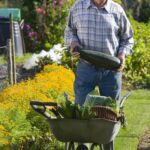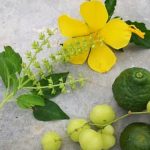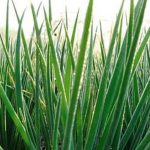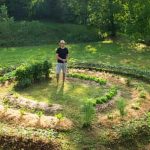Are you ready to explore the world of southwest vegetable gardening? The unique climate and landscape of the Southwest present both challenges and opportunities for those looking to cultivate a thriving vegetable garden in this region.
With its hot, arid conditions, the Southwest requires a specific approach to gardening, making it essential for gardeners to understand how to adapt their techniques to the environment. In this article, we will delve into the world of southwest vegetable gardening, from identifying the best vegetables for this region to dealing with pests and diseases, as well as exploring sustainable gardening practices.
In the first section, we will take a deep dive into the climate and landscape of the Southwest and how it impacts vegetable gardening. Understanding these factors is crucial for successfully growing vegetables in this region, as it influences everything from soil preparation and maintenance to watering and irrigation techniques. By gaining insight into these unique environmental aspects, gardeners can learn how to work with – rather than against – the natural conditions of the Southwest.
Our exploration will also cover the best vegetables for southwest gardening and how to cultivate them successfully. Identifying which vegetables thrive in hot, arid conditions is key for a successful harvest in this region.
Additionally, we will discuss tips for soil preparation and maintenance, including irrigation and mulching strategies that are essential for supporting healthy plant growth in Southwest vegetable gardens. With our comprehensive guide, you’ll be equipped with all the knowledge you need to kick-start your own successful southwest vegetable garden.
Best Vegetables for Southwest Gardening
When it comes to southwest vegetable gardening, selecting the right vegetables is crucial for a successful harvest. The hot and arid conditions of the Southwest present unique challenges, but there are several vegetables that thrive in this climate. One of the best vegetables for Southwest gardening is the tomato. With proper care and attention to watering, tomatoes can thrive in the intense heat of the region. They require well-draining soil and regular watering to produce juicy, flavorful fruits.
Another vegetable that does well in Southwest vegetable gardens is peppers. Whether they are sweet bell peppers or spicy chili peppers, these plants love the heat and sunshine of the Southwest. Proper soil preparation is essential for growing healthy pepper plants, as they require fertile soil with good drainage. Additionally, providing some shade during the hottest part of the day can help prevent sunscald on pepper fruits.
In addition to tomatoes and peppers, leafy greens like lettuce and spinach can also be successfully grown in Southwest vegetable gardens. These cool-season vegetables can be planted in early spring or late summer when temperatures are milder, allowing them to thrive despite the hot summers in the region. With careful attention to irrigation and choosing heat-tolerant varieties, gardeners can enjoy a bountiful harvest of fresh greens throughout the growing season in their Southwest gardens.
Soil Preparation and Maintenance
When it comes to Southwest vegetable gardening, soil preparation and maintenance are crucial to the success of your garden. The unique climate and landscape of the Southwest present some challenges, but with the right techniques, you can create a thriving vegetable garden. Here are some tips for preparing and maintaining the soil in Southwest vegetable gardens, including the importance of irrigation and mulching:
Irrigation is vital in the Southwest, where hot, arid conditions prevail. Proper watering techniques are essential for ensuring that your vegetables have enough moisture to grow and thrive. One of the most efficient methods for irrigation in Southwest vegetable gardens is drip irrigation.
This method delivers water directly to the roots of plants, minimizing water wastage through evaporation and runoff. It’s a sustainable and effective way to ensure that your vegetables receive the water they need without overusing this precious resource.
In addition to proper irrigation, mulching is another important aspect of soil maintenance in Southwest vegetable gardening. Mulch helps to retain soil moisture, regulate soil temperature, suppress weed growth, and prevent erosion. Organic mulches such as straw, wood chips, or compost can be used to cover the soil around your vegetables.
Not only do they provide these benefits, but as they break down, they also add valuable nutrients to the soil, improving its overall health. By incorporating these irrigation and mulching techniques into your Southwest vegetable garden maintenance routine, you can create an environment where your vegetables can thrive despite the challenging climate of the region.
By following these soil preparation and maintenance tips specific to Southwest vegetable gardening, you can set yourself up for success in cultivating a productive and healthy garden. With proper irrigation techniques like drip irrigation and the use of organic mulches for moisture retention, temperature regulation, weed suppression and erosion prevention; these strategies will help you overcome the challenges posed by this unique climate while enjoying a bountiful harvest from your garden.
Dealing With Pests and Diseases
When it comes to southwest vegetable gardening, dealing with pests and diseases is a common challenge due to the unique climate and landscape of the region. However, by being proactive and implementing effective natural solutions, gardeners can successfully prevent and treat these issues. Below are some common pests and diseases that affect vegetable gardens in the Southwest, along with natural strategies for dealing with them:
1. Aphids: These tiny insects are a common problem in southwest vegetable gardens, feeding on plant juices and causing damage to leaves and stems. To deter aphids naturally, consider introducing beneficial insects such as ladybugs or lacewings to your garden. Additionally, you can create a homemade insecticidal soap using water, liquid dish soap, and a small amount of vegetable oil to spray on affected plants.
2. Powdery Mildew: This fungal disease thrives in hot, dry conditions, making it a particular concern for southwest gardeners. To prevent powdery mildew, ensure proper air circulation between plants by spacing them appropriately. You can also use a natural fungicide spray made from baking soda and water to treat affected plants.
3. Tomato Hornworms: These large caterpillars are known for their voracious appetite and can quickly decimate a tomato plant if left unchecked. To control tomato hornworms without harsh chemicals, consider hand-picking them off your plants or attracting their natural predators such as parasitic wasps or braconid wasps.
By implementing these natural solutions for pest and disease control in southwest vegetable gardens, gardeners can ensure healthy and thriving crops while minimizing harm to the environment.
Seasonal Planting Guide
The Southwest region of the United States presents unique challenges and opportunities for vegetable gardening. The arid, hot climate of states like Arizona, New Mexico, and Nevada requires specific attention to detail when it comes to planting and cultivating vegetables. Understanding the seasonal planting guide is essential for successful vegetable gardening in the Southwest.
When it comes to planting vegetables in the Southwest, timing is everything. Due to the extreme heat and limited water resources, it’s important to pay close attention to the unique growing seasons and climate patterns of the region. For example, cool-season crops like lettuce, spinach, and peas thrive in the relatively mild winters of the Southwest, while warm-season crops such as tomatoes, peppers, and squash do best when planted after the last frost in late spring.
In addition to being mindful of temperature and weather patterns, Southwest vegetable gardeners need to consider the unique microclimates that exist within the region. Higher elevations may have cooler temperatures and shorter growing seasons, while low-lying desert areas can experience intense heat and sun exposure.
Understanding these variations is crucial for determining the best times to plant different vegetables and maximizing their growth potential in diverse Southwest landscapes. With careful consideration of seasonal planting schedules tailored to the Southwest climate, gardeners can yield bountiful harvests despite challenging conditions.
Watering and Irrigation Techniques
Growing vegetable gardens in the Southwest presents unique challenges, including water scarcity and extreme heat. However, with the right watering and irrigation techniques, it is possible to cultivate a thriving garden even in this arid climate. In this section, we will explore the most efficient and sustainable methods for watering and irrigating Southwest vegetable gardens, including the use of drip irrigation systems and water-conserving strategies.
Drip Irrigation Systems
One of the most effective ways to ensure that your vegetable garden in the Southwest receives adequate water is by using a drip irrigation system. This method delivers small, precise amounts of water directly to the base of plants, minimizing evaporation and runoff. Drip irrigation can also be set on timers to ensure that plants receive consistent moisture without wastage.
Water-Conserving Strategies
In a region where water conservation is crucial, employing various strategies to minimize water usage in your vegetable garden is essential. Mulching with organic materials such as straw or wood chips can help retain soil moisture and reduce evaporation. Additionally, practicing deep watering – saturating the soil to encourage deep root growth – can help plants withstand periods of drought without excessive watering.
Monitoring Soil Moisture
Another key aspect of efficient watering in Southwest vegetable gardening is monitoring soil moisture levels. Investing in a soil moisture meter can help you accurately assess when your plants need water, preventing overwatering or underwatering. By keeping an eye on soil moisture levels and adjusting your watering schedule accordingly, you can minimize water waste while ensuring that your vegetables receive the hydration they need.
By implementing these advanced watering and irrigation techniques tailored for the unique conditions of the Southwest, you can promote healthy plant growth while conserving precious water resources. With thoughtful planning and sustainable practices, successful vegetable gardening in this challenging climate is not only possible but rewarding.
Sustainable Gardening Practices
Xeriscaping
Xeriscaping is a method of landscaping and gardening that reduces or eliminates the need for supplemental irrigation. This practice is particularly relevant to the challenges of gardening in the Southwest, where water scarcity is a significant issue. Xeriscaping involves choosing and planting drought-resistant plants, using efficient irrigation methods, improving soil quality, and minimizing turf areas. By embracing xeriscaping in vegetable gardens, Southwest gardeners can reduce water consumption while still cultivating a bountiful harvest.
Companion Planting
Companion planting is another sustainable gardening practice that is well-suited to the unique climate of the Southwest. By strategically planting compatible crops together, gardeners can naturally control pests, maximize space, and improve overall plant health. For example, planting marigolds alongside tomatoes can help repel nematodes and protect these heat-loving vegetables from soil-borne diseases. Similarly, interplanting corn with beans can provide natural support for climbing beans while fixing nitrogen in the soil-a win-win for both crops.
Mulching
Incorporating mulching into vegetable gardens is essential for sustainable gardening in the Southwest. Mulch helps conserve moisture, regulate soil temperature, suppress weeds, and improve overall soil health. Organic mulches like straw and wood chips are particularly effective at retaining moisture and nutrients in the arid conditions of the Southwest. Additionally, as organic mulches break down over time, they contribute to building healthy soil structure-a critical component of sustainable vegetable gardening.
By embracing sustainable gardening practices such as xeriscaping, companion planting, and mulching, Southwest vegetable gardeners can successfully navigate the challenges posed by this unique climate while promoting environmental responsibility and resilience in their gardens.
Success Stories and Tips From Southwest Gardeners
In conclusion, Southwest vegetable gardening presents its own set of unique challenges, but the region’s climate and landscape also offer great opportunities for success. By selecting the right vegetables, preparing and maintaining the soil properly, and implementing efficient watering and irrigation techniques, gardeners can cultivate thriving vegetable gardens in the hot, arid conditions of the Southwest.
Dealing with pests and diseases is another key aspect of successful Southwest vegetable gardening. By familiarizing themselves with common issues and employing natural prevention and treatment methods, gardeners can protect their crops from harm without resorting to harmful chemicals or pesticides.
Furthermore, embracing sustainable gardening practices such as xeriscaping and companion planting not only helps conserve water but also promotes a healthy, balanced ecosystem within the garden. These environmentally friendly practices are particularly relevant to the challenges of gardening in the Southwest and can contribute to long-term success for both experienced and novice gardeners.
Ultimately, by learning from the experiences and insights of seasoned Southwest vegetable gardeners, beginners can gain valuable knowledge and inspiration to embark on their own successful gardening endeavors in this unique region. With careful planning, dedication, and a willingness to adapt to the specific demands of Southwest vegetable gardening, anyone can enjoy a bountiful harvest of fresh produce grown right at home.
Frequently Asked Questions
What Vegetables Can You Plant in the Southwest?
In the Southwest, vegetables that thrive in the dry, hot climate include tomatoes, peppers, squash, and green beans. These vegetables are well-suited to the arid conditions and can withstand the high temperatures.
What Is the Growing Season in the Southwest?
The growing season in the Southwest typically runs from late February or March through October. This longer growing season allows for multiple plantings of crops like tomatoes, peppers, and squash, maximizing the potential harvest.
What Is the Easiest Vegetable to Grow in the Desert?
One of the easiest vegetables to grow in the desert is okra. This heat-loving plant thrives in hot and dry conditions, making it well-suited to the desert climate. Okra is also relatively low-maintenance and produces a plentiful harvest with minimal effort.

If you’re looking to get into vegetable gardening, or are just looking for some tips on how to make your current garden better, then you’ve come to the right place! My name is Ethel and I have been gardening for years. In this blog, I’m going to share with you some of my best tips on how to create a successful vegetable garden.





